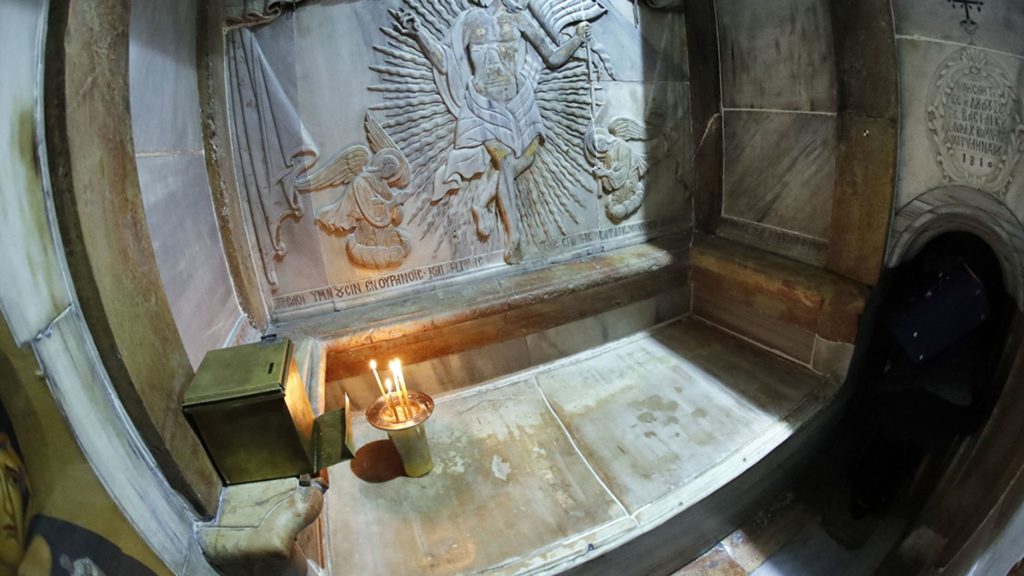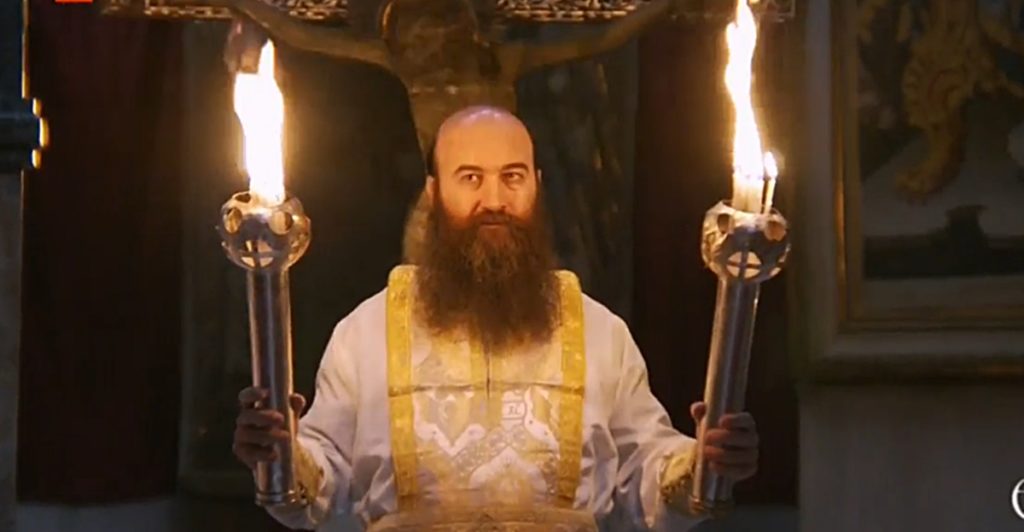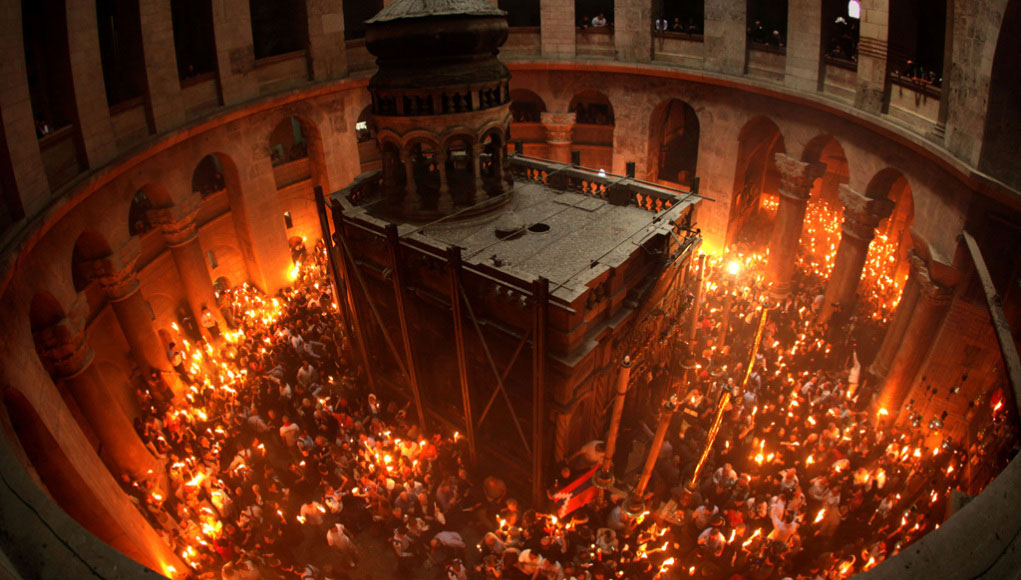Every year on Holy Saturday, exactly on the day between the Crucifixion of Golgotha on Good Friday and the Resurrection of the Son of God on Sunday, in Jerusalem, the Fire of Grace descends from heaven to earth. A light and fiery manifestation of the living God who comforts the Church of Christ, testifying that Christ is with us in all days until the end of the age.
Holy Saturday is the day that the body of the Lord, as far as we know, spent right here, in the Tomb, in Edicule. The day spent by the world “without God”, sacrificed on the Cross for the remission of the sins of the world. This day is one of the possible symbolic representations of the entire history of fallen humanity, because it means the duration between victory over death and renewal of God-mankind.
The tomb of the Lord is the place in the cave where the body of Christ lay after the funeral. Now it is Edicule, the chapel of the Tomb of Christ inside the Resurrection Temple in Jerusalem. Every year, on the Saturday before Orthodox Easter, when the Orthodox first hierarch serves, in Edicule, at the Holy Sepulcher, one of the greatest miracles that has been repeated since ancient times takes place. The Holy Fire descends from heaven, miraculously lighting candles for the Orthodox Patriarch, and then for other believers.

On Holy Saturday, pilgrims, people of different nationalities and representatives of different churches, come to the Temple of the Holy Sepulcher and wait for God’s special blessing, the descent of the Holy Fire. All the chandeliers in the temple were extinguished on Friday evening, and the door of Edicule was sealed. About two o’clock in the afternoon
a procession led by the Patriarch of Jerusalem arrives in Edicule.
The patriarch undresses, remains only in the sticharion, and with thirty-three candles in his hands, according to the number of the Savior’s years lived on earth, he enters the Tomb. People with fervent prayer await a miracle. And suddenly: the light illuminates Edicule. The patriarch comes out with lighted candles. Everyone strives to light their own candles. In a few minutes, the entire temple is filled with a white-blue glow. People seem to bathe in an unburned fire, which never burns. Everyone rejoices in the descending grace, they feel the invisible presence of Jesus Christ. “
“… Holy fire began to appear in the altar of the Angels, in the vast majority of cases in the form of an arch above the entrance to the Tomb of the Lord. The fire has a white-blue color, as it did on the Saturday before Easter, and it appeared 20 times. “
“On the day when we were near the Tomb of the Lord, the patriarch prayed for about an hour. I saw a blue flash in Edicule, and then it shone brighter and brighter. burning candles to the faithful, the flames spread throughout the temple at lightning speed. “

In order to dispel doubts about this miraculous event, the appearance of the Holy Fire takes place under the strict and zealous supervision of the civil authorities. Here is a note on the official measures taken:
“All the fires in the temple are extinguished the day before, on Good Friday, and the temple remains under police control. The room of the Holy Sepulcher is thoroughly inspected and then the entrance is sealed. The patriarch himself is examined from head to toe to determine if there is anything Only after that did they remove the seal from the entrance to the Tomb of the Lord and let the patriarch into it to receive the Blessed Fire. the temple is illuminated by a sea of fire. ” (“Miracles at the Lord’s Tomb,” 3-4)

This Holy Fire does not burn at all during the first minutes. Only then does it become commonplace, spontaneous, material.
Saints Gregory of Nyssa (4th century) and St. John of Damascus (8th century), the church historian Eusebius (4th century), also wrote about the Holy Fire. Tryphon Korobeynikov and Yuri Georgiev Grekov, Moscow pilgrims from the 16th century, note that among the Christians present on Holy Saturday in the Church of the Holy Sepulcher, are in this order: Greeks, Syrians, Serbs, Iberians (Georgians), Russians, Aryans, Volozhi .. .

From the descriptions of many pilgrims, we learn that the Orthodox high priests who receive The Holy Fire are people of high spirituality, who themselves are a model of piety. In the memoirs of Varvara Brin de Saint-Hippolytus, a 19th-century pilgrim, she describes how, after the appearance of this miracle on Holy Saturday in 1859, she visited Metropolitan Meletius of Petra, who received the Holy Fire that year: “He was very emaciated and pale. but the expression on his face was therefore more pleasant and characterized by an unusual serenity.
“It is clear: you all prayed so fervently that God answered your prayers. It happened that I prayed with tears for a long time, and the fire did not come down from heaven until two o’clock. This time I saw him as soon as the door closed behind me … When I came out, I was like blind, I didn’t see anything ‘, he answered. “And if they had not kept me, I would have fallen!”

